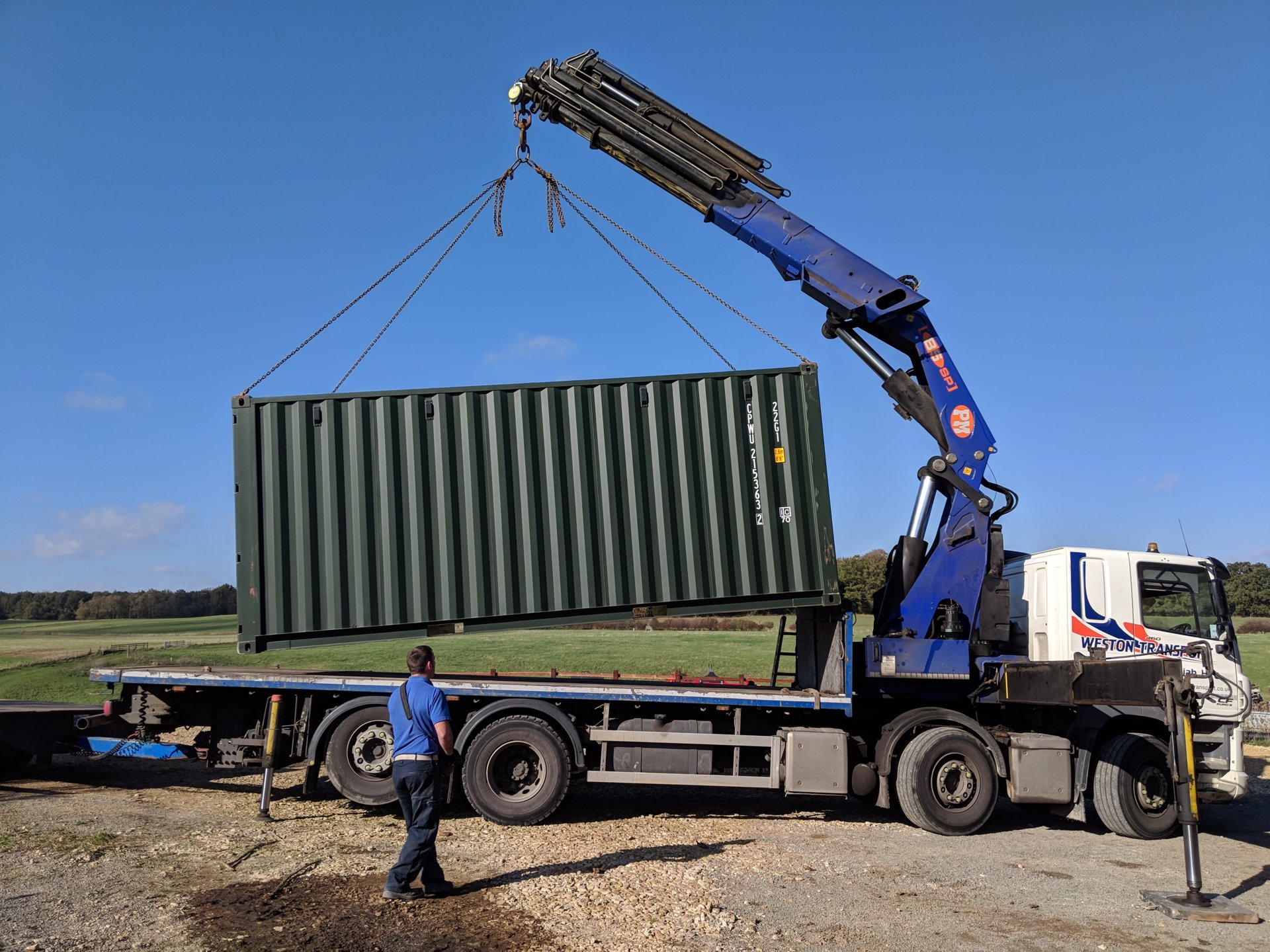Your Guide to Using Shipping Containers on Your Property

Last Updated on July 23, 2024
Are you considering a shipping container for your property?
Here is a list of things to consider when deciding on your shipping container for storage or a facility – for example, a portable office.
- Planning permission: Containers are temporary structures and can be moved at any time with the correct equipment. However, some councils have their own definition of a shipping container; for example, it could be considered a building and therefore a permanent fixture requiring planning permission.
- Neighbours: Sometimes the neighbours feel a shipping container isn’t aesthetically pleasing and can be an eyesore.
- Vehicular access via A and B roads: Many smaller roads can be too small to take the HIAB vehicles we use to deliver the containers. A 20ft container is delivered on an 8-wheeler HIAB vehicle (approx. 40 ft long x 10ft wide) and a 40ft container is delivered on a 60 ft long x 10ft wide articulated HIAB vehicle. The 8-wheeler vehicles are what’s known as “rigid“ (which means the cab does not break away from the rest of the vehicle) and they need a large turning circle. The articulated vehicles do not need as much of a turning circle but the trailer is long and can cause issues on turning. HIAB means the vehicle is fitted with a crane so that the container can be offloaded. See our Delivery and collection details here.
- Overhanging trees: Our HIABs cannot offload underneath trees.
- Overhead cables: HSE legislation states that it is not safe to offload underneath overhead cables. It could be fatal if the crane touches or comes extremely close to a cable.
- Underground cables: The same rules apply as for the overhead cables.
- Manhole covers/Drains: Our vehicles are too heavy to park on manhole covers/drains. If the outriggers are positioned on drains, this will cause the vehicle to topple over.
- Pathways: The HIAB vehicles require outriggers off to the side for stability when offloading the container. These outriggers can damage the surface of the pathway.
- Perimeter walls: The crane on the vehicles can only lift over and away from the vehicle so far.
- Ground surface: You need to ensure that the ground where the container is to be placed is absolutely level prior to delivery (read here for more details). The HIAB vehicles need a hardcore surface to drive over and offload from. They simply do not have the traction to drive out if they get stuck.
- Road offload: The HIAB vehicles are not allowed to be on any highway when we are offloading a container.
- Adequate space: Your container needs sufficient space for the doors to open. The vehicle needs plenty of room for access and offloading. The vehicle needs at least 10ft of space on each side for the outriggers, which ensure stability at the point of offload.
The Versatility of Shipping Containers
- Access your belongings with ease.
- Containers are so versatile when it comes to storage and office space.
- Containers are secure and durable, giving you peace of mind when it comes to protecting your goods.
- They are watertight to keep the weather out and ventilated to reduce the chance of condensation, ensuring your goods are protected. We sell Absorpoles that will also reduce excess moisture in the container.
- They are cost effective, because you don’t have to spend time and fuel to take goods offsite and then back onsite.
- You can hire or buy new (one trip) and second-hand containers, giving you flexibility.
- If you move premises then you can take the container with you; however, we can only move empty containers.
Navigating Legal Requirements
Containers are “a temporary structure and as such can be moved with the right vehicles”. However, some councils feel that planning permission is necessary.
Even if the council initially say you don’t need planning permission, sometimes they can then ask you to apply for retrospective planning permission, for example, if a neighbour starts to complain to the council.
We recommend you call your council to see what their view is on whether you need planning permission or not.
With regards to the offloading of a container, legally our vehicles are not allowed to offload from a highway. If you are requesting this, then you will need to obtain the necessary permission from your local highways department. It will be your responsibility to obtain this permission.
HSE legislation stipulates that our vehicles must have a clearance of 18m from the top of the crane height which equates to 28m from the ground. This applies to any angles away from the cables. The vehicle will certainly need to lift to this height at the time of offload, therefore, we will not offload underneath any cables.
Please ensure that these legal restrictions are adhered to, to avoid any potential issues and fines.
Sustainability and Eco-Friendliness
When using shipping containers you have a choice of buying new (one trip) or second hand. The second-hand containers are approx. 15 years old and have come to the end of their shipping life, but are perfect as a site store. This can extend their life by around another 15 years, which means they have been repurposed.
The new (one trip) containers are used for 1 shipment from China and they are sold as ‘New’ site stores. They will last in the region of 40 years for site storage.
All containers (new and used) are refurbished into many different facilities; for example, chemical stores for farms, storage for schools and councils, portable offices and snack shacks. This extends their life by adding new paint, insulation and other parts.
Keeping Your Container in Top Shape
We have prepared a list of jobs and care instructions that will keep your container lasting longer.
It’s always good to keep an eye on your container from time to time, ensuring that you keep up with the maintenance as and when required. This will ensure the life of the container is as long as possible.
Protecting Your Investment: Insurance and Liability
It is important to insure your container against any liabilities, accidents or theft. Although containers are secure, there can always be another way of illegal access.
We recommend you discuss your requirements with your insurers.
In conclusion, we recommend you do your research regarding the space you have, the legal issues and your storage/facility requirements.
Please call Jane, Matt and Clare with your questions and requirements on 0800 121 7388. We are here to assist you with your storage and facility solutions.

